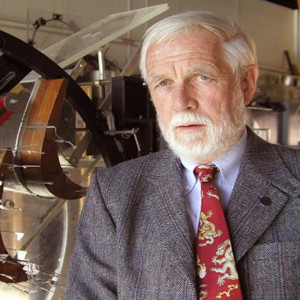The Role of Gas Turbines in Global Energy Conversion
Speaker: Dr. Lee Langston, Professor Emeritus, University of Connecticut
Date: Oct 6, 2017; Time: 2:30 pm Location: UTEB 175
 Abstract: It has been remarked that “invention is the mother of necessity” – not the other way around. Technology breakthroughs of themselves, can and do create world markets. In a very short period of history, the gas turbine, youngest of major energy conversion devices, has changed and created global markets in aviation, in marine propulsion and in generation of electric power. In this talk we will discuss how in less than 80 years the gas turbine has come to dominate aircraft propulsion and now, global electrical power generation. In 1939, the first gas turbines had a thermal efficiency of about 18%. Over the years, many thousands of engineers and researchers in academia, government and industry have worked to raise turbine inlet temperatures, increase pressure ratios, enhance combustion, perfect new materials and improve designs, so that modern gas turbines now achieve 40-45% in simple cycle operation. In combined cycle operation, the gas turbine has become the thermal efficiency superstar of the electric power plant world, bringing about combined cycle thermal efficiencies exceeding 60%. Today, gas turbine technology and testing improvements continue apace, and some of these will be discussed. Fuel usage is being drastically reduced in newer land-based gas turbines through the first practical use of recuperators and intercoolers. Small gas turbines are now being used to produce electricity from greenhouse gases at municipal waste water treatment plants. A commercial closed cycle helium gas turbine has been proposed to generate electricity, using a pebble bed modular nuclear reactor as a heat source. The engine in production for the F-135 Joint Strike Fighter is pushing the limits of jet engine technology and will lead to future improvements in gas turbine technology.
Abstract: It has been remarked that “invention is the mother of necessity” – not the other way around. Technology breakthroughs of themselves, can and do create world markets. In a very short period of history, the gas turbine, youngest of major energy conversion devices, has changed and created global markets in aviation, in marine propulsion and in generation of electric power. In this talk we will discuss how in less than 80 years the gas turbine has come to dominate aircraft propulsion and now, global electrical power generation. In 1939, the first gas turbines had a thermal efficiency of about 18%. Over the years, many thousands of engineers and researchers in academia, government and industry have worked to raise turbine inlet temperatures, increase pressure ratios, enhance combustion, perfect new materials and improve designs, so that modern gas turbines now achieve 40-45% in simple cycle operation. In combined cycle operation, the gas turbine has become the thermal efficiency superstar of the electric power plant world, bringing about combined cycle thermal efficiencies exceeding 60%. Today, gas turbine technology and testing improvements continue apace, and some of these will be discussed. Fuel usage is being drastically reduced in newer land-based gas turbines through the first practical use of recuperators and intercoolers. Small gas turbines are now being used to produce electricity from greenhouse gases at municipal waste water treatment plants. A commercial closed cycle helium gas turbine has been proposed to generate electricity, using a pebble bed modular nuclear reactor as a heat source. The engine in production for the F-135 Joint Strike Fighter is pushing the limits of jet engine technology and will lead to future improvements in gas turbine technology.
Biographical Sketch: Lee Langston received a BSME (1959) from the University of Connecticut, and an MS (1960) and a Ph.D. (1964) from Stanford University. He was with Pratt and Whitney Aircraft as a research engineer working on fuel cells, heat pipes and jet engines from 1964 to 1977. During these years, he also participated in mountain climbing activities in various parts of the world. He joined the mechanical engineering faculty at the University of Connecticut in 1977, rising to the rank of Professor in 1983. At UConn, he has taught graduate and undergraduate courses in heat transfer and fluid mechanics, with research activities involving the measurement, understanding and prediction of secondary flows in gas turbines. He served as Interim Dean of the School of Engineering in 1997-98 and became Professor Emeritus in 2003. He is a Life Fellow of the American Society of Mechanical Engineering Engineers (ASME), has served as Editor, ASME Journal of Engineering for Gas Turbines and Power (2001-2006) and was a member of the Board of Directors of the ASME International Gas Turbine Institute (IGTI). In 2015, he was the recipient of IGTI’s R. Tom Sawyer Award, for outstanding contributions in the field of gas turbines. For the past seventeen years Professor Langston has written a column and a variety of articles on gas turbine technology for IGTI and ASME’s Mechanical Engineering Magazine.